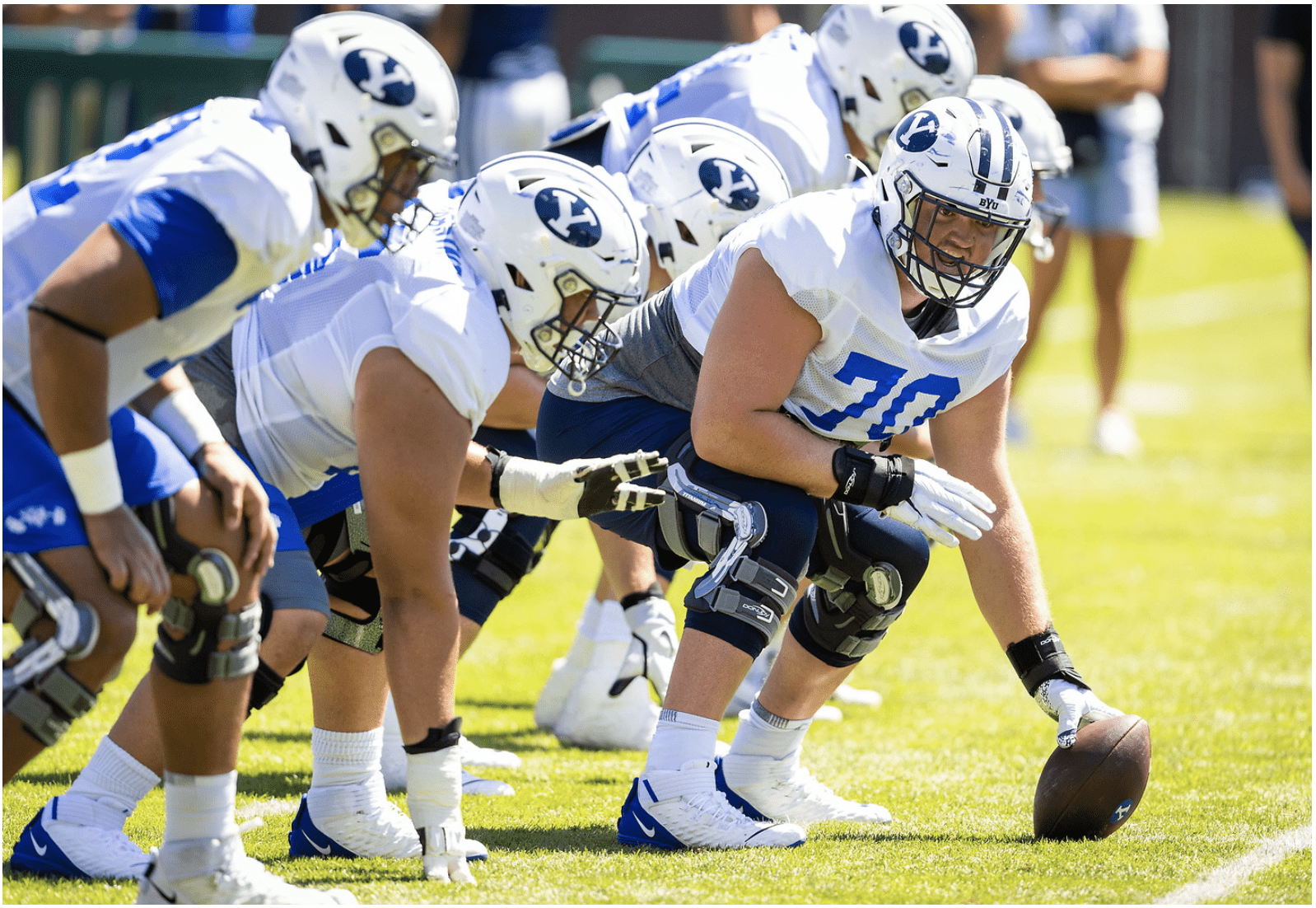
BYU’s offensive line woes are on the forefront of most every Cougar fan’s mind, and for good reason.
While the pass-blocking has been adequate through four games played, the run-blocking has been downright abysmal. Signs of struggle appeared early with the Cougars struggling to find much ground success against the likes of Southern Utah. Fast-forward to consecutive poor performances versus relatively stout defensive fronts of both Arkansas and Kansas, and the run-blocking deficiencies dwarf other concerns surrounding the team in the minds of most.
The numbers speak for themselves. Absent LJ Martin’s 45-yard touchdown run versus Arkansas, BYU rushed for just 32 yards on 30 carries with Martin accounting for 32 of those yards on 22 attempts.
It got worse against Kansas, where just nine yards were gained on 22 carries with Martin accounting for 28 yards on 11 carries and Deion Smith another 10 yards on four carries.
So how is it fixed?
Ben Criddle welcomed in two people who know better than most of what it takes to establish a productive rush attack in former BYU linebacker Cameron Jensen and former BYU offensive lineman Dustin Rykert. Jensen co-hosted the show and provided his expertise on what’s ailing the run-blocking throughout while Rykert was brought on as a guest to provide his insights.
9-25-23- Dustin Rykert- Former BYU O linemen- What is wrong with the Offensive line, can it be fixed? #BYU https://t.co/v3jKnwDN3T
— ESPN 960 (@espn960sports) September 25, 2023
Culture
Both Jensen and Rykert emphatically agreed that lack of culture is the primary reason why the run-blocking has suffered this season. Jensen often talks about how he held genuine animosity for the great offensive lines he went up against during BYU practice sessions when he was a player. That animosity was fueled by an attitude the offensive line held which could best be described as a bully mentality.
Rykert, who played at BYU just prior to Jensen’s arrival described, “It starts with the grit — the tenacity of wanting to walk on that field, look across the line and saying, ‘I dominated you today.’…It’s almost like you have a sense of punishment…It’s not like you’re going out there to cheap-shot them, but it’s about putting them on their back, and then letting them know you put them on their back.”
“Then you got them off their game,” Rykert continued. “Then you’re in their head. You start rolling on them and we just haven’t seen that yet. They’re stepping laterally off the line…They’re getting off the line, but not into their line — getting a push. So if it’s me, I’m spending a lot of time on that sled this week.”
The good news is Rykert believes it isn’t too late to develop that culture, given the relative newness of those taking the primary reps along BYU’s offensive front.
As for the relative unfamiliarity players have for one another along the offensive line, Criddle pointed out his stat that 70 percent of those forming the two-deep on the offensive line are transfers to the program. So developing the proper mentality while operating in BYU’s lateral wide-zone blocking scheme might not be the best combination, at least not initially.
Scheme
Many fans have set about to criticize the wide-zone scheme, which calls for more lateral movement from the offensive line in lieu of just teeing off on blocking assignments vertically. What works against this criticism is that BYU has found success run-blocking out of a wide-zone scheme in years past, although others would counter that the success has been too inconsistent.
As for Rykert, he asserted on the program that the scheme is sound.
“I don’t want to say anything negative about what (BYU offensive line coach Darrell) Funk is doing because I think he’s a great technician coach,” Rykert said, while reasserting the onus lies primarily with the players. “…I think it’s a week away. It’s a week away from it just clicking…You put it on the linemen and you challenge them…I think scheme-wise they’re sound.


